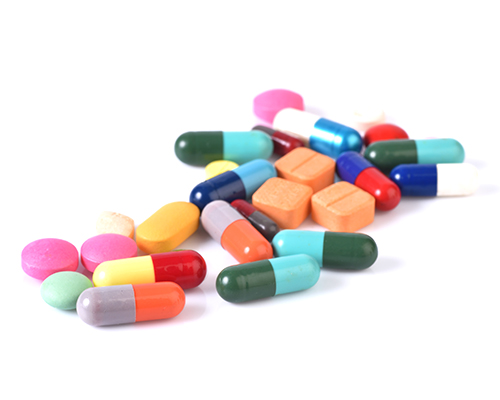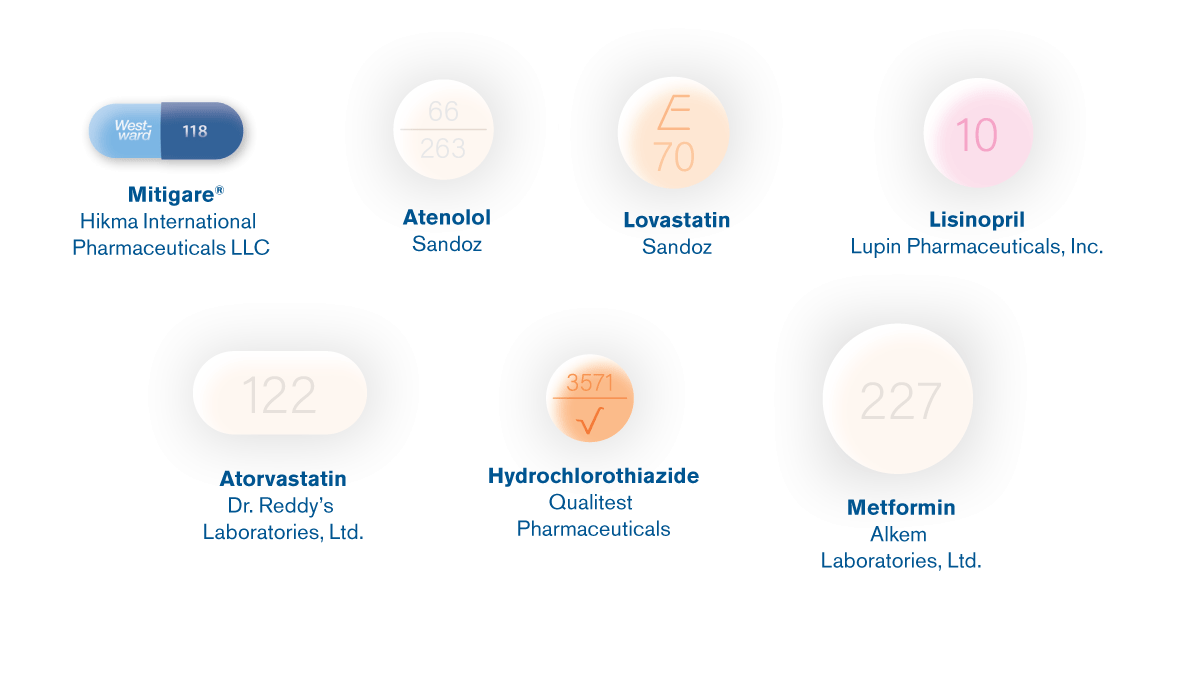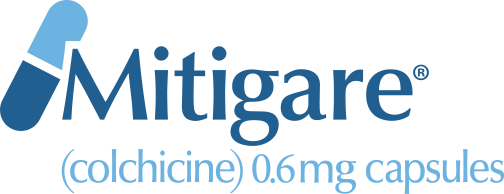
According to the US Food and Drug Administration, medication errors are the most common type of mistake made in health care.1 However, the color of a medication can reduce the risk of these errors by helping patients confirm that they are taking the correct drug and/or dose.2 A medicine’s color may also help to reduce the risk of dispensing errors in pharmacies and hospitals.3
Multiple medications
As we age, many of us need multiple medications each day to help manage our chronic health conditions. The typical Medicare patient, for example, may take as many as 18-24 different prescription drugs each year.4 To make matters more confusing, many of these medications may look alike or very similar to one another. Note the visual similarities in the sampling of high blood pressure, cholesterol and diabetes medicines, below, compared to the bright blue color of a Mitigare®(colchicine) 0.6 mg capsule.

The significance of color
The color of a medication is important for a number of reasons:
Easy identification
A distinctive color can help you confirm that you are taking the correct medicine and dose. Medicines with a distinctive color, such as Mitigare® (colchicine) 0.6 mg capsules, are recognizable as soon as you open the bottle. Medicines that stand out from others may also be easier to identify for people who take multiple medications.2
Dose confirmation
Some medications, such as Synthroid® (levothyroxine sodium tablets, USP) and Coumadin® (Warfarin Sodium Tablets, USP) Crystalline, are available in multiple dosages. These doses are color-coded to enable healthcare professionals and patients to confirm the correct dose at a glance.
Reduced risk of dispensing errors
In 2016, more than 4 billion prescriptions were filled at US pharmacies.5 Some retail stores require their pharmacists to fill hundreds of prescriptions each day, working nonstop for as long as 12 hours at a time.6 Medication color may make it easier for pharmacists to recognize a medicine and confirm that a prescription has been accurately filled.3
Medication tips
Taking your medicines as prescribed is an important part of maintaining your overall health and well being. Keep the following tips in mind to take your medications safely7:
- Always keep your medicines in their original containers
- Understand that heat, light and air can damage your medicines; be sure to store them as directed
- Never use a medicine that has changed in color or appearance
Talk with your doctor or pharmacist
If you are having trouble keeping track your medicines or have questions about the drugs you’re taking, be sure to talk with your doctor or pharmacist. He or she may be able to help you find ways to manage your medicines and stay more organized.
NOTE: This article was not written by a medical professional and is not intended to substitute the guidance of a physician. These are not West-Ward’s recommendations for gout flare prevention, but rather facts and data collected from various reliable medical sources. For a full list of resources and their attributing links, see below.
All registered trademarks are the property of their respective owners.
